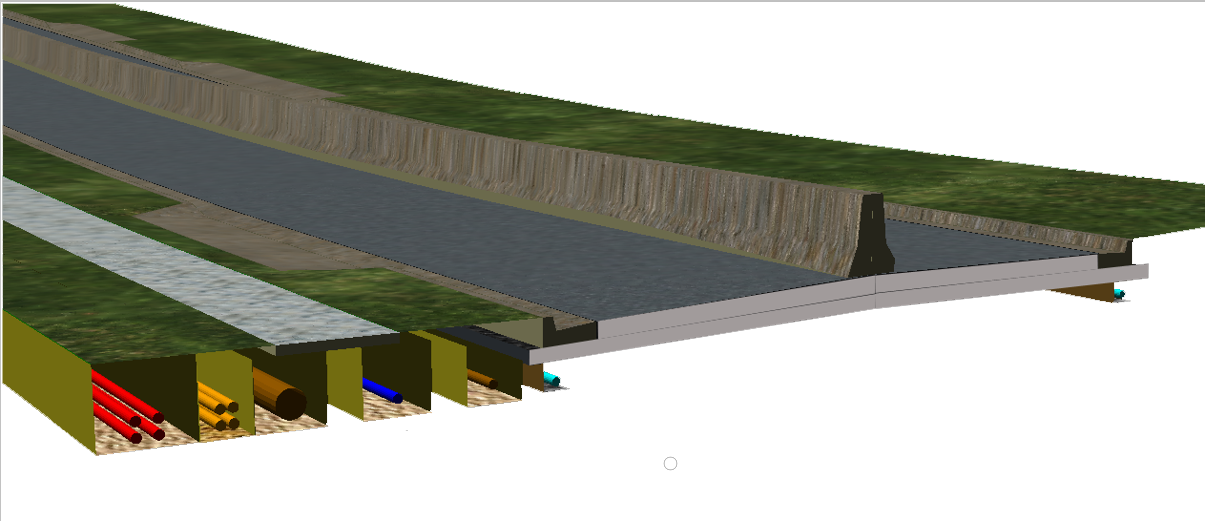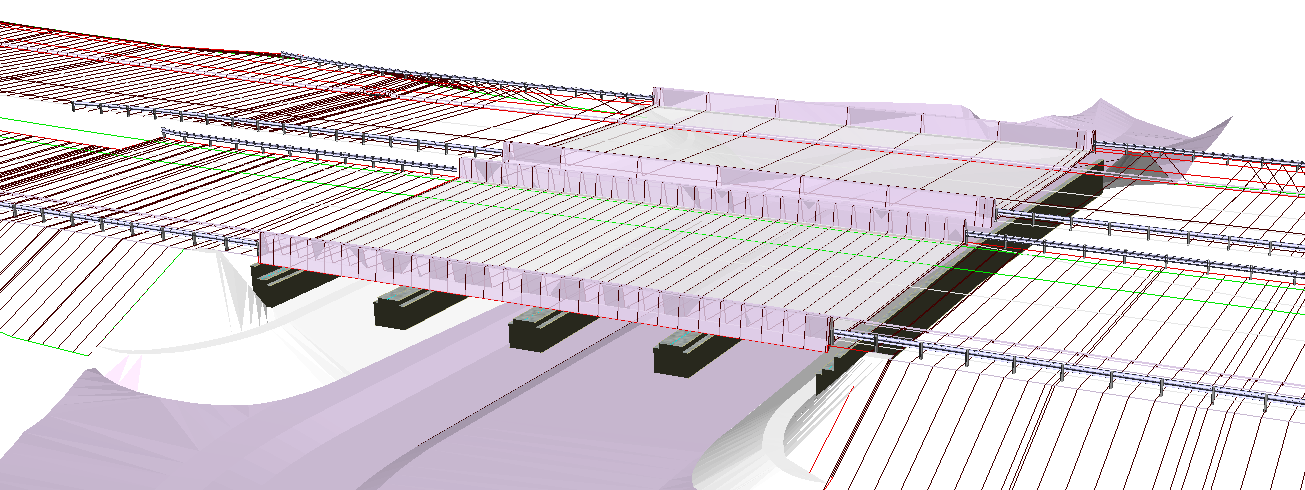12d Model Detailed Alignment Design
Documents
Alignment Flyer
Alignment design adds another dimension to 12d® Model™, providing the tools to carry out the full range of civil design work, from land development to multi-lane highways with major intersections and exits.
The parametric geometry generator (Components) quickly produces fully linked objects for intersections, turning lanes and roundabouts and other complex civil engineering objects.
12d® Model™ template modifier and string modifier operations allow for the interactive design of the most complex civil situations the modifiers include
- modifying cross-fall, width and height between chainages
- projecting the cross-fall between two existing strings onto design cross sections and strings
- widening out to an existing string
- creating cross sections at user specified chainages
- modifying the height and/or offset of the hinge string
The ability to create 12d® Model™ trimesh objects means that the creation and modelling of complex civil engineering shapes and solids, such as tunnels, barriers, bridge components, sub surface construction layers and many more can be carried out easily and associated with other design elements
Alignment design is fully interactive and changes made in the design will be automatically reflected in other segments of your projects including design strings, cross sections, triangulations, long and cross section plots and visualisations.
Designs created using the super alignment element method enable the designer to “link” common properties of the design, for example an at-grade intersection to a main alignment. Should any portion of the main alignment change in horizontal or vertical geometry, the linked or referenced string can be re-solved and subsequent re-calculations automatically applied to the design.
The 12d® Model™ super alignment utilises not only alignment design by the Fixed and Free method, but introduces a complete new approach to horizontal and vertical road design. Particular attention has been paid to the editor’s graphics (highlighting of IPs and Elements, tangent points and chainage direction).
While the traditional use of the fixed and floating method of design may have been primarily for rail or highway interchange work, 12d’s super alignment has been developed for those disciplines, as well as for use in the creation of:
- subdivision road centrelines
- kerb returns
- roundabouts
- cul-de-sacs
In combination with the visualisation module, rendering of the design is also linked to the design geometry. Visualisation of the design, for example guardrail extrusion, is immediately updated as the design is amended.


